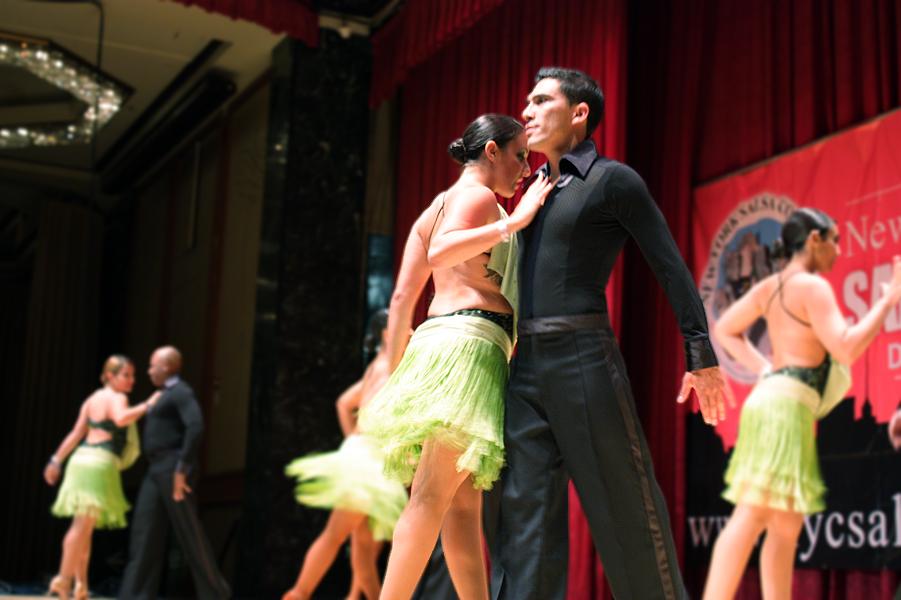
Bachata in NYC at the New York Bachata Dance & Music Festival.
Photo by longislandwins licensed Creative Commons Attribution.
As the national music and dance of the Dominican Republic, the merengue has a colorful history. As with all Dominican stories, there are many versions. One story about the development of the merengue claims the dance was the result of a group of partying villagers who, out of sympathy for a war hero who had just returned home with a limp, danced as though they too had been wounded.
Few musical genres and dances have been so loaded with national significance as merengue has been. Another, more likely story says that the dance was based upon the foot-dragging movement that resulted from slaves whose feet were chained together as they cut sugarcane in the fields. The idea is that these slaves, who observed the ballroom dances of their masters, adapted their own version set to the music of drumbeats to make it more enticing rhythmically. Where their masters’ dances were on the stiff side, however, the slaves developed their movements to be more upbeat.And yet one more possibility is that merengue was spawned from a type of Cuban music called upa upa.
Today, merengue has several variants, including the more formal ballroom merengue and the contemporary club merengue, which incorporates the hips more in its movements. Famous merengue musicians include Sergio Vargas and Fernandito Villalona.
Few musical genres and dances have been so loaded with national significance as merengue has been. For a long time, it was the poster-child music and dance of the white-skinned, wealthy, and bourgeoisie of the nation and was the first music to be associated with Dominican nationalism. This concept was backed in large part by Trujillo himself using it at state functions, demanding that no one leave the dances until he himself had departed.
He also went so far as to use the music as a propaganda tool, demanding that artists write songs about how great a leader he was. What Trujillo didn’t count on was the built-in contradiction of merengue. The music and dance were derived from African roots, a suitable national symbol for a country loaded with racial and class contradictions.
Learning to dance merengue is fun and lessons are available poolside at all the big resorts. This partner dance has a hold where the follower is at a slight angle and slightly to the right of the leader. It isn’t necessarily fancy patterns that generate the wows and raves from onlookers, but the motion of the movements. It is less booty wiggle than it is about contra-body movement between knee bending and upper body, resulting in the signature and sexy hip motion.
In general, the music is almost a kind of blues of the Caribbean. Juan Luis Guerra is a Dominican musician who has gained international popularity for bachata, as well as for merengue and for combining the two genres, but purists would argue that his music is closer to a form of ballad or bolero than it is to bachata.
Still, the international spotlight that shone on bachata as a result of his album titled Bachata Rose gave significant attention to other of the nation’s beloved bachateros, like Antony Santos, Luis Vargas, Frank Reyes, and the duo Monchy y Alexandra, to name a few. It wasn’t until the 1990s that bachata became socially acceptable in its own Dominican Republic. Before that, it was seen (by the upper class) as vulgar and the music of the lower barrios.
Lately, bachata has exploded into the ballrooms and clubs all over the world. Bachata dance festivals in Europe and North America are teaching people this four-beat dance. Three steps are taken and then a hip motion is made in the opposite direction in four beats. Repeat in the other direction. It is the signature hip motion that is perhaps the hardest for people learning the dance to master. But without it, whether subtle or sharp, the bachata is not being danced. With its increased popularity have come fusion dances like bachatango, which crosses bachata with Argentine tango moves.